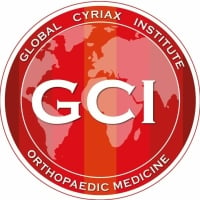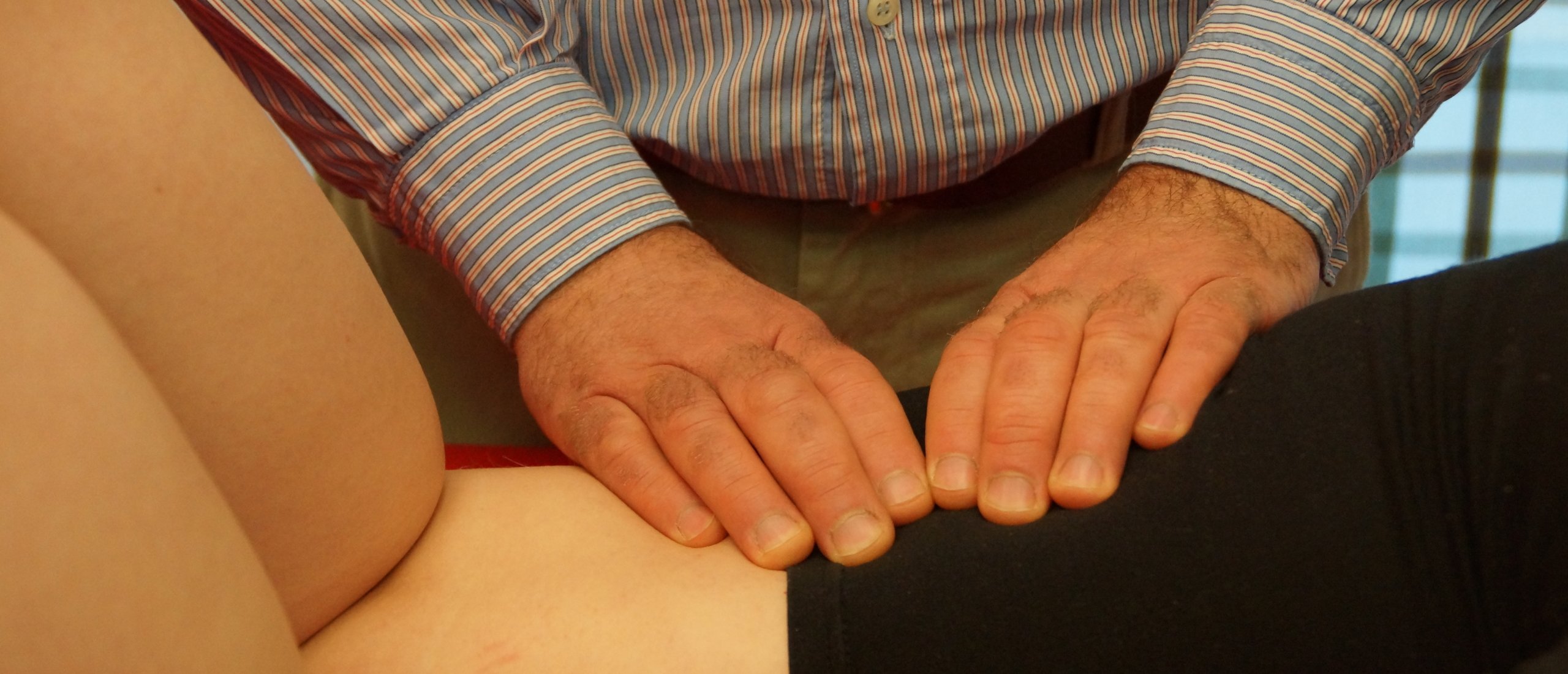
Hip muscle and tendon overuse lesions
Muscular and tendon overuse lesions in the hip area
Muscular lesions at the hip are not so frequent, except for an adductor or psoas lesion. Keep in mind, when more resisted tests prove positive, we first have to exclude e.g. a trochanteric bursitis.
Adductor longus tendinitis (rider’s sprain)
Resisted adduction hurts at the upper inner thigh. Most often, the lesion lies at the musculotendineous junction, sometimes at the tenoperiosteal junction.
Note : when suspect a tendinitis or -osis, palpation should be positive at one of these sites.
If not,
- a fracture
- or dislocation
- or metastases in the os pubis should be suspected and medical imaging examination is called for. (Healing of the fracture - stress or injury - is expected in 6-8 weeks.)
Transverse friction massage, adductor longus, musculotendinous junction
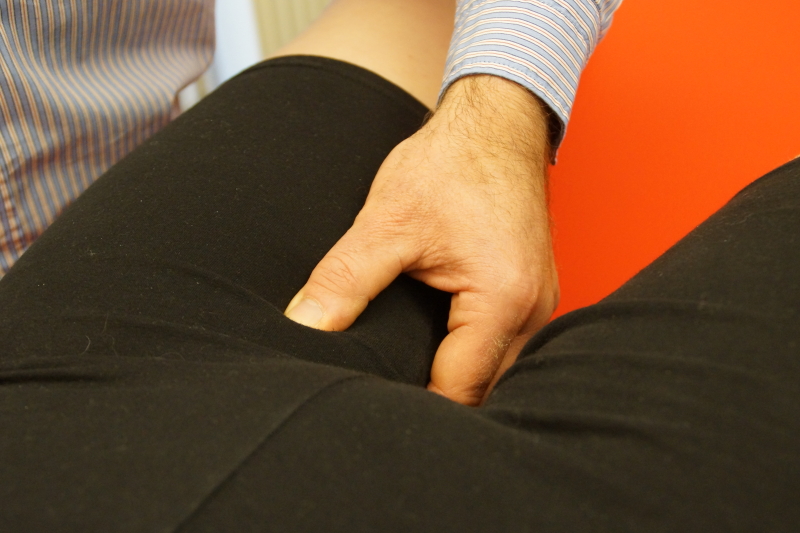 adductor longus transverse friction massage, MTJ
adductor longus transverse friction massage, MTJ
Starting position : slight abduction and lateral rotation. The deep friction is a pinching technique with thumb and fingers, with the heel of the hand as a fulcrum. A large reserve of skin is taken in a lateral direction, then pressure is applied and the active phase of the deep friction is a horizontal movement in a medial direction.
Transverse friction massage, adductor longus, tenoperiosteal junction
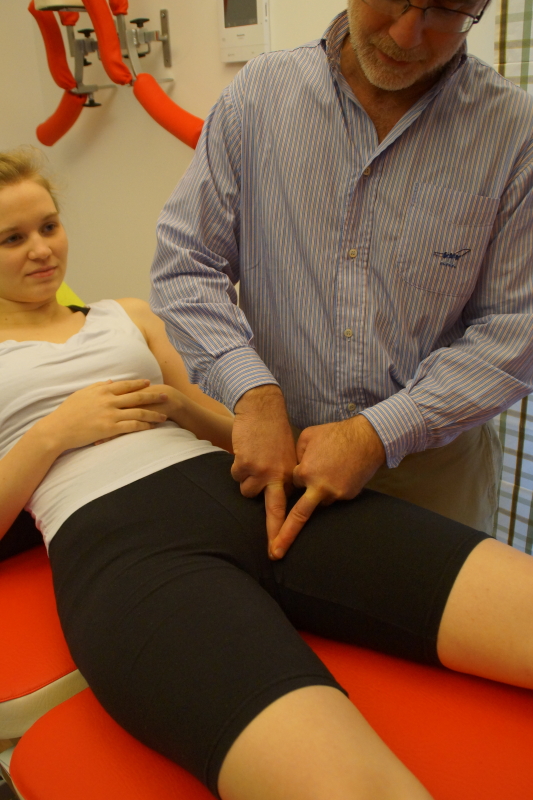 Adductor longus transverse friction massage, tenoperiosteal
Adductor longus transverse friction massage, tenoperiosteal
Starting position : slight abduction and lateral rotation. For a right adductor longus we palpate upwards with the left middle finger until we feel the inferior edge of the bone ; then, the finger is turned 45° medially and feels now bone and tendon at the same time. It is reinforced by the other middle finger. The deep friction is the normal execution.
Psoas muscle belly lesion
A psoas muscle strain is rather uncommon but can be treated quickly and efficiently by deep transverse friction massage.
The resisted hip flexion is painful of course, but we should make sure that the test is performed from 90° hip flexion, to avoid too much involvement of the upper quadriceps, which would influence the test result in an unwanted way.
The lesion generally lies in the lower part of the muscle belly, just below the inguinal ligament, medial to the sartorius muscle.
Here too, palpation should be positive.
Transverse friction massage psoas muscle belly
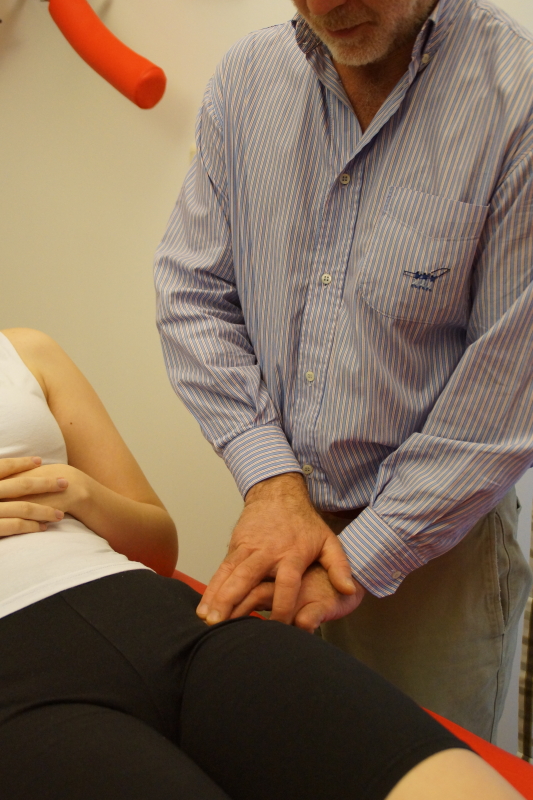 Transverse friction massage psoas muscle belly
Transverse friction massage psoas muscle belly
The patient adopts the half-lying position. Site of the lesion : below the inguinal ligament and medial to the sartorius muscle. For a left psoas muscle, we use the left index and middle fingers, reinforced by the right middle and ring fingers. Do not release the pressure on the way back.
Remark : for the patient’s comfort, it is essential to keep the fingers horizontal and to increase the pressure gradually.
Differential diagnostic options :
- A rectus femoris tendinitis : the resisted knee extension will also painful.
- In case of a sartorius muscular lesion (which is very rare) we also provoke pain on resisted lateral rotation. However, pain AND weakness on resisted lateral rotation points in the direction of a traction fracture of the SIAS.
- Atraction fracture of the lesser trochanter : we find pain and weakness on resisted flexion.
- Metastases at the upper femur : we find pain and weakness on various resisted tests with markedly positive passive tests.
- Obturator hernia : pain on resisted flexion, negative palpation for the psoas ; after 10-20 minutes rest in the Trendelenburg position, the resisted flexion test becomes negative. Other test procedures are called for.
- Abdominal neoplasm infiltrating the psoas muscle : resisted flexion test painful and weak,normal passive hip tests.
- L2/L3-nerve root palsy (psoas alone = L2, with quadriceps = L3) resulting in weakness.
Sartorius muscle lesion
A simple tendinitis is extremely rare ; usually the lesion is a traction fracture of the SIAS in an adolescent.
In that case we hear a specific history :
while running, the patient felt a sudden painful click in the groin and the thigh ; since then, he can only walk with pain and cannot run.
The examination shows pain and weakness on resisted flexion and lateral rotation ; resisted knee flexion can also hurt.
On palpation, there is local tenderness at the SIAS and the cranial 2 cm of the muscle.
Spontaneous recovery is expected in some weeks.
Gluteal muscles
In elderly people a so-called gluteus muscle lesion is very often seen on ultrasound imaging. But, there is a big discrepancy between what we could see on medical imaging and the actual complaints of the patient. Therefore it is imperative to listen carefully to the patient’s story and to interpret the clinical image in an objective way.
A real gluteal muscle lesion is in fact very rare.
When resisted abduction or extension hurts, a bursitis is suspected first ; a real lesion of a contractile structure is only our second thought.
Iliotibial band (tractus iliotibialis)
The lesion usually lies just cranial to the greater trochanter ; it provokes similar symptoms as a gluteal/trochanteric bursitis.
The signs are : pain on trunk side flexion away from the painful side, and pain on passive hip adduction. Complementary test: trunk side flexion with the legs crossed, hurts more.
Cross friction massage is the treatment of choice (of course + home exercises).
Occasionally, the clinical pattern resembles that of a gluteal/trochanteric bursitis ; if passive abduction also hurts, bursitis is more likely (because of the bursa being squeezed in).
Transverse friction massage iliotibial band
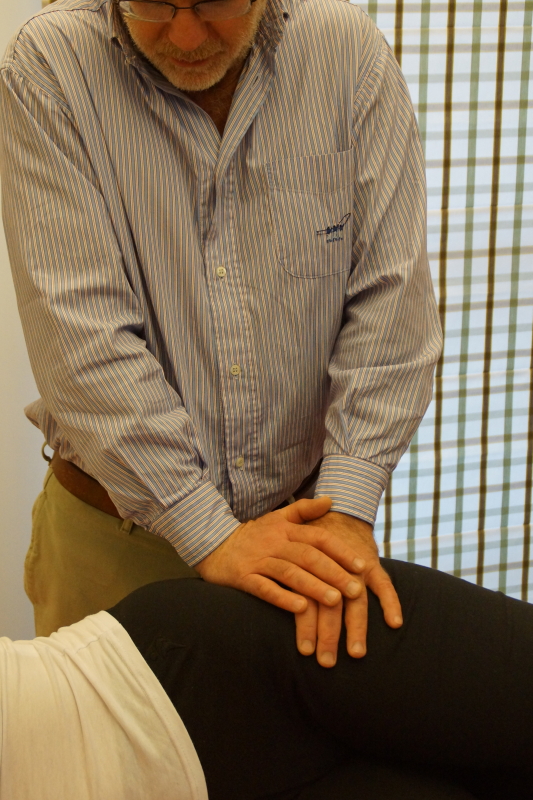 Transverse friction massage iliotibial band
Transverse friction massage iliotibial band
The patient lies on his side with a cushion between his knees.
The therapist takes a reserve of skin towards himself, then puts the thumb onto the lesion and reinforces it with the heel of the other hand ; both arms are extended. The deep friction is the normal execution, in which the active phase is a forward movement of the entire trunk. The patient’s pelvis is stabilized by the therapist’s thigh and fingers.
Quadriceps and hamstring muscles
A muscle belly lesion (partial rupture, with haematoma ?) is slightly more common than a tendinitis.
The difference between both is that, in a muscle belly lesion, there is muscle spasm and consequently limitation of passive movement, whereas in a tendinitis there is never limitation of passive movement.
So, an acute lesion in a quadriceps muscle belly causes limitation of passive knee flexion ; an acute hamstring muscle belly lesion causes limitation of straight leg raise.
Transverse friction massage rectus femoris tendon
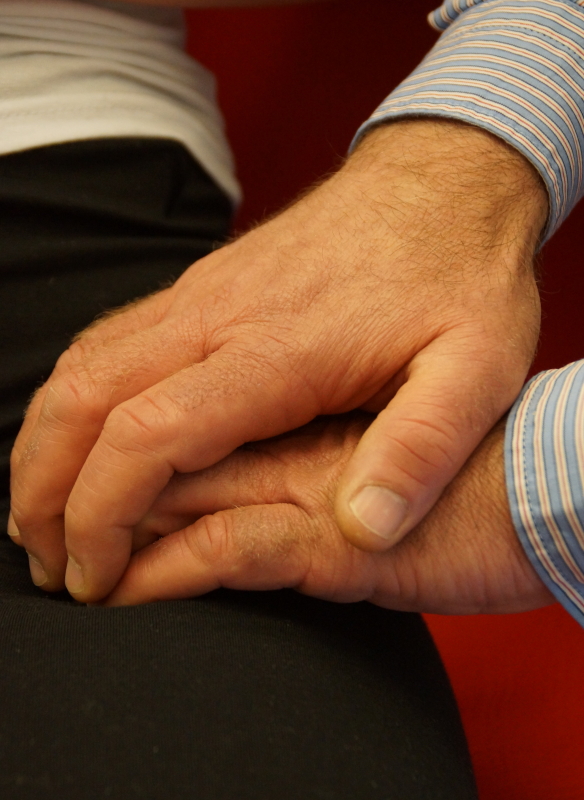 Rectus femoris transverse friction massage
Rectus femoris transverse friction massage
The patient sits with 90° hip flexion. We find the tendon just lateral to the sartorius muscle. For a left rectus femoris, the flexed fingers of the left hand, reinforced by the fingers of the other hand, grasp the tendon. The deep friction is the normal execution with an active phase towards the therapist.
Muscle belly treatment strategy
- Aspiration of the haematoma, followed by an infiltration of a local anaesthetic (50 cc)
- from the next day, in a shortened position : transverse friction massage, active and electrical contractions
- Note : initially, active contractions without weight-bearing and without resistance. The electrical contractions enable the best possible action of all muscle fibres in order to avoid the formation of adhesions.
Of course, in chronic cases, longitudinal stretch exercise is necessary too ; I refer to the specific chapters on friction massage.
Transverse friction massage, hamstrings muscle belly
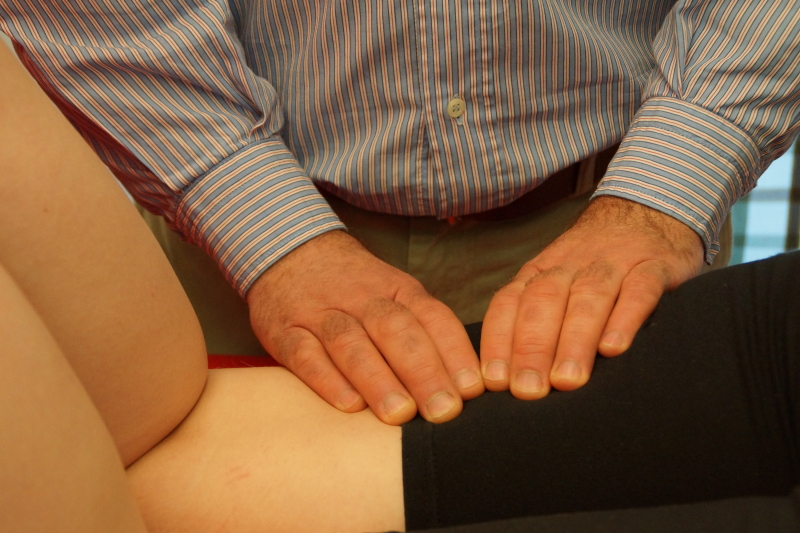 Hamstrings muscle belly transverse friction massage
Hamstrings muscle belly transverse friction massage
The muscle is in a fully relaxed position (prone lying, knees 90° flexed). The deep friction is the normal execution with all fingers, covering a large area in order to limit the risk of adhesion formation.
Transverse friction massage, origin of hamstrings
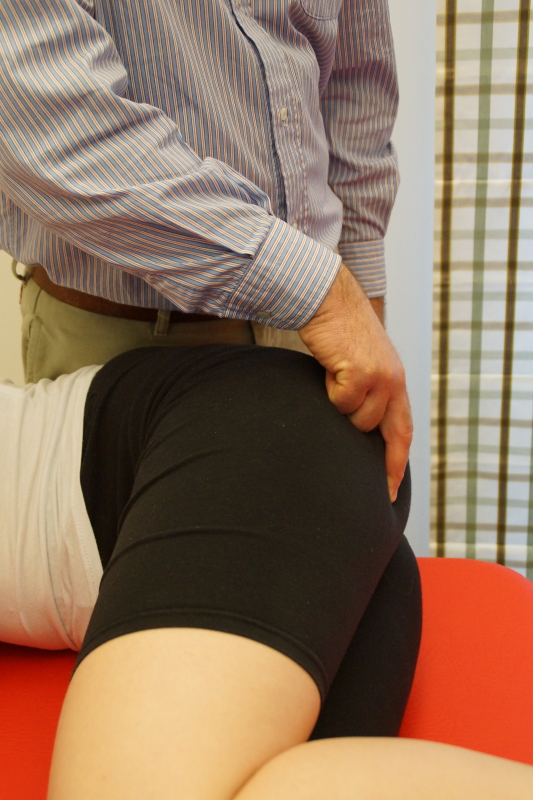 Transverse friction massage, origin hamstrings
Transverse friction massage, origin hamstrings
The patient lies on his side with hips and knees in 90° flexion. The deep friction is the normal execution with two or three fingers ; they feel the ischium and the tendons at the same time.
